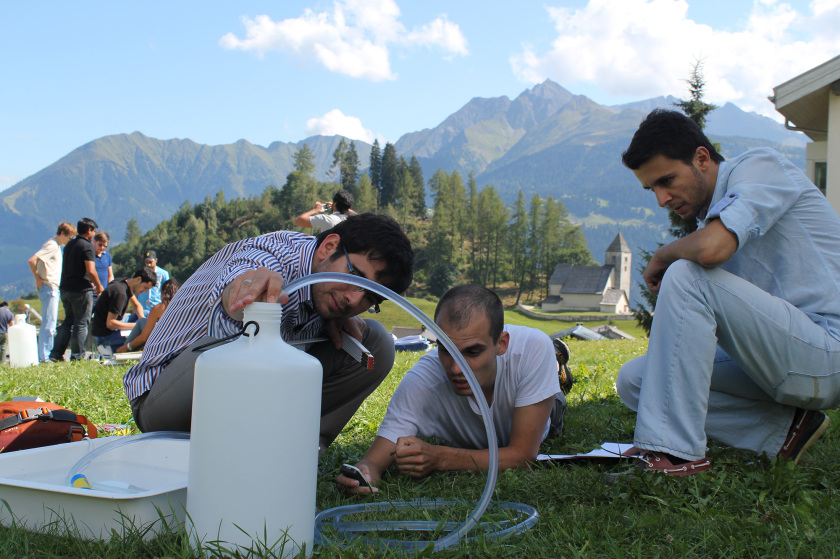International Summer University on Renewable Energies: Registration now open

ISUenergy participants experimenting during a practical.
On behalf of the ISUenergy Scientific & Organising Committee it is a great pleasure to announce the 6th International Summer University on Renewable Energies and to invite your applications for this year's ISUenergy .The ISUenergy2014 will take place from Aug. 24th - Sept. 5th in Falera.
The International Summer University on Energy (ISUenergy 2014) invites you to participate in two unforgettable weeks to learn, experience and enjoy a series of seminars and lectures on renewable energies in the Swiss Alps. The school integrates different academic fields such as Physics, Material Science, Material Engineering, Architecture, Political Science and Economics, and it follows the successful ISUenergy 2009, ISUenergy 2010, ISUenergy 2011, ISUenergy 2012, and ISUenergy 2013.
The ISUenergy 2014 will provide students with a solid foundation in photovoltaics, solar thermal technologies, wind energy, solar architecture, sustainability, smart grids and energy storage. Renowned researchers and scientists from leading universities and institutes will give lectures covering a wide range of topics on the principles of renewable energy. Theoretical knowledge will be complemented with practical workshops in the first week and creative group projects (e. g. building a solar oven or installation of a LED lightening system) in the second week with special on hands-on experience.
Please find more information on the international summer university and on the application procedure under the following link. Early bird fee applications will be valid before May 15th, 2014, only.
The ISUenergy program website will be updated accordingly.
If you should have any questions, you are always welcome to contact us for more information: isue@helmholtz-berlin.de .
ISUenergy 2014 Team
https://www.helmholtz-berlin.de/pubbin/news_seite?nid=13932;sprache=en
- Copy link
-
Lithium-sulphur batteries with lean electrolyte: problem areas clarified
Using a non-destructive method, a team at HZB investigated practical lithium-sulphur pouch cells with lean electrolyte for the first time. With operando neutron tomography, they could visualise in real-time how the liquid electrolyte distributes and wets the electrodes across multilayers during charging and discharging. These findings offer valuable insights into the cell failure mechanisms and are helpful to design compact Li-S batteries with a high energy density in formats relevant to industrial applications.
-
Self assembling monolayer can improve lead-free perovskite solar cells too
Tin perovskite solar cells are not only non-toxic, but also potentially more stable than lead-containing perovskite solar cells. However, they are also significantly less efficient. Now, an international team has succeeded in reducing losses in the lower contact layer of tin perovskite solar cells: The scienstists identified chemical compounds that self-assemble into a molecular layer that fits very well with the lattice structure of tin perovskites. On this monolayer, tin perovskite with excellent optoelectronic quality can be grown, which increases the performance of the solar cell.
-
Berlin Science Award goes to Philipp Adelhelm
Battery researcher Prof. Dr. Philipp Adelhelm has been awarded the 2024 Berlin Science Award. He is a professor at the Institute of Chemistry at Humboldt University in Berlin (HU) and heads a joint research group at HU and the Helmholtz Zentrum Berlin (HZB). The materials scientist and electrochemist is investigating sustainable batteries, which play a key role in the success of the energy transition. He is one of the leading international experts in the field of sodium-ion batteries.
